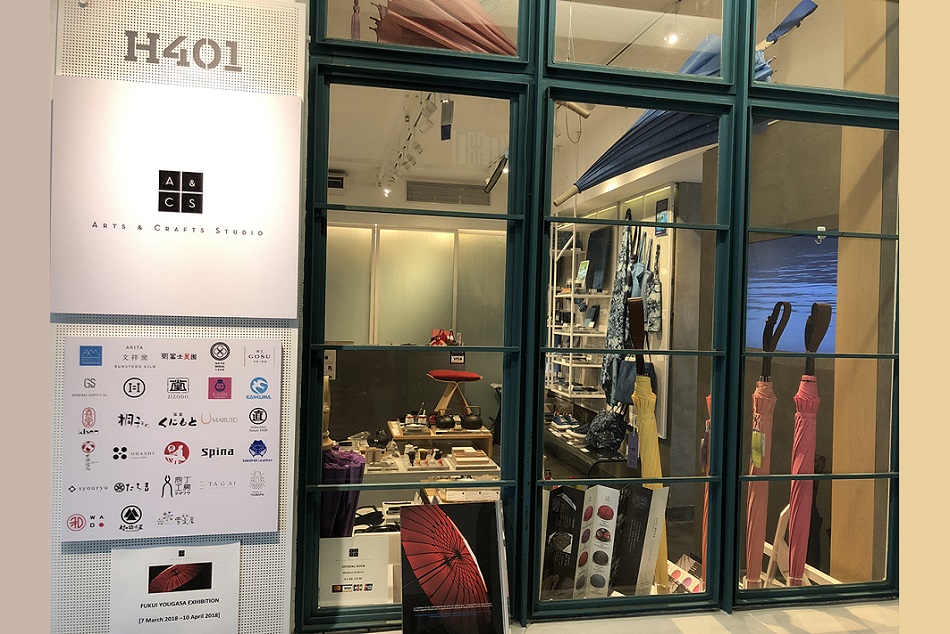PMQ Corner #02
Legendary Wool Felt
Debbie Leung
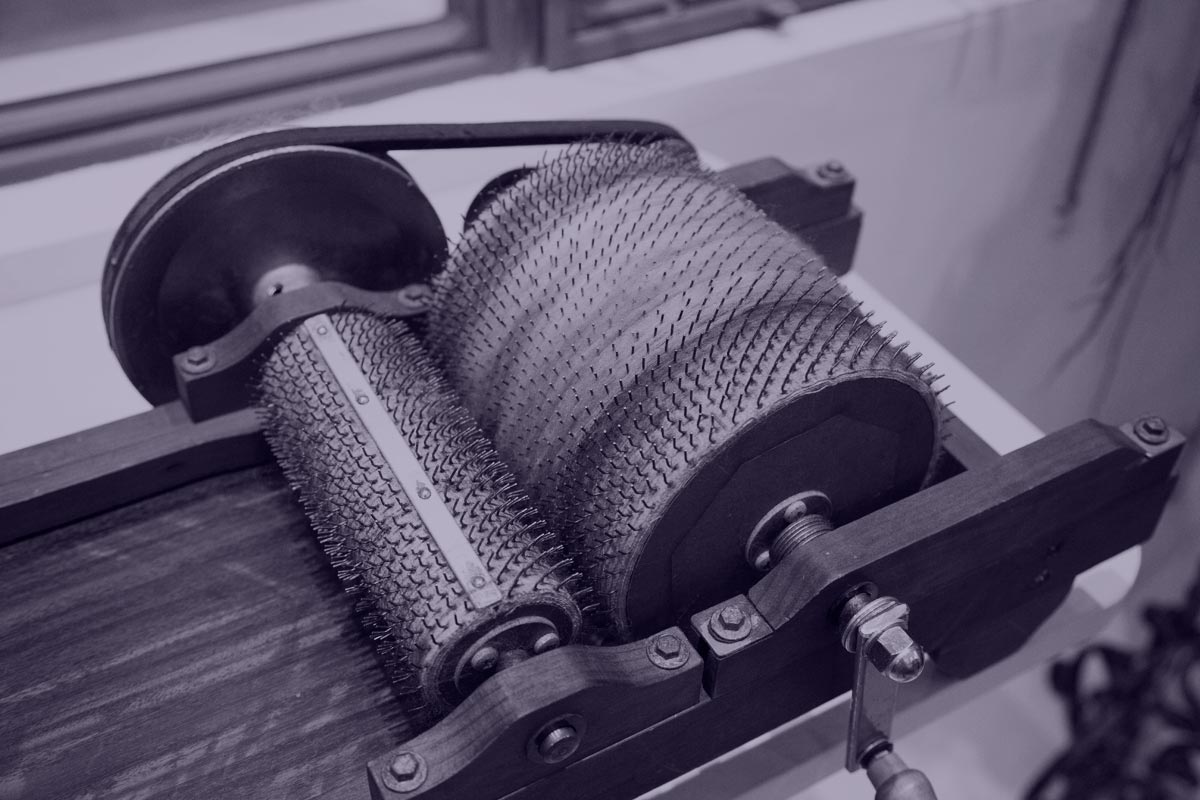
Written by Linus
Translated by Derek Leung
Photos by Debbie Leung
Debbie's story is not unusual , but it is never simple. She studied law and was a lawyer for some time. Then, she got married, moved to the US with her husband, and studied golf management. After returning to Hong Kong, she opened a golf training centre. Yet, she found running a business too tiring, so she retired earlier and moved to a small house in Zhongshan, China with her husband, where her another half enjoyed playing golf and she devoted herself to making pottery and firing glass in her workshop.
That’s her life for a few years. Ten years ago, she went fishing in New Zealand and met a German who taught her some fluffy stuff. Since then, her life suddenly got a total change. That was the wool felt fiber which drew her to the magical world of craftsmanship.
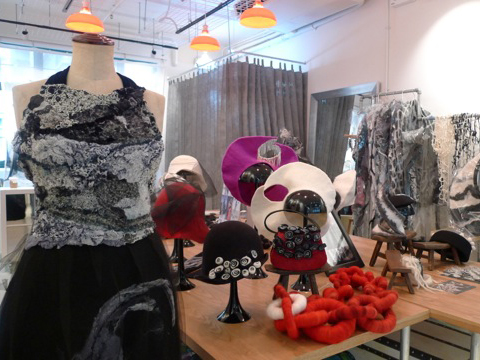
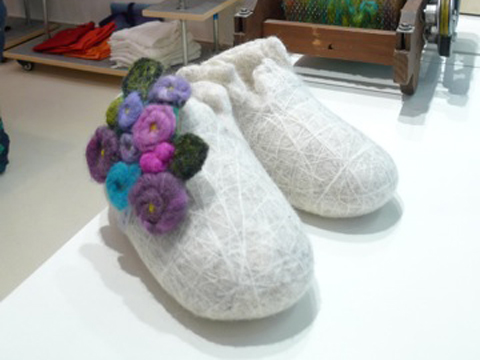
Left: Evening wear, handbags, hats and shawls can be made of wool felt.
Right: Lovely kid's shoes are both warm and natural.
"It's really magical," described Debbie whenever wool felt is mentioned, "This is the most primitive material in the evolution of human beings. Simply with a few presses and squeezes on the fiber and a wooden roller plus some soda water, you can make a piece of felt out of a bunch of wool. What a magic it is!"
As a matter of fact, the origin of wool felt making is also a legend. It was reported that when the sheep passed by the bushes during pasturing, wool was rubbed off by branches. Ancient shepherds would pick it up to fill their shoes as soft pads. The constant friction between the wool and the soles, with the addition of sweat, turned the wool into felt-like pieces inside the shoes.
In recent years, wool fiber handicrafts has become popular among girls. Many of them love making wool balls with pieces of wool felt.. Of course, the handicrafts Debbie makes are much more complicated. She first starts with wool balls, wool felt blankets, and later on she even makes skirts, tops, scarves, handbags and hats... When you walk into her newly-opened shop, you can even find shoes and iPad jackets made of wool felt there.
Originally, wool felt is warm, water-resistant and non-flammable, and thus the most practical and convenient material for making clothes. Later, cotton is found and wool felt is considered not refined enough. It was not until the 1960s that the Australians came up with an idea to mix wool felt, silk and linen together for weaving, and that the wool felt became revived despite its consistently trivial role in the huge world of fashion.
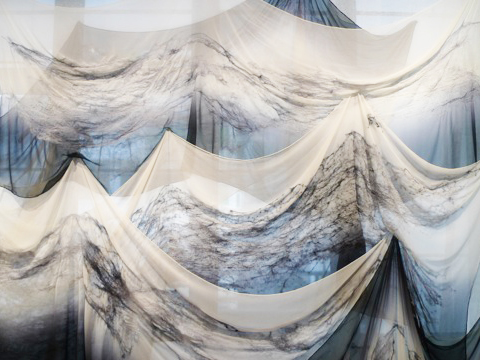
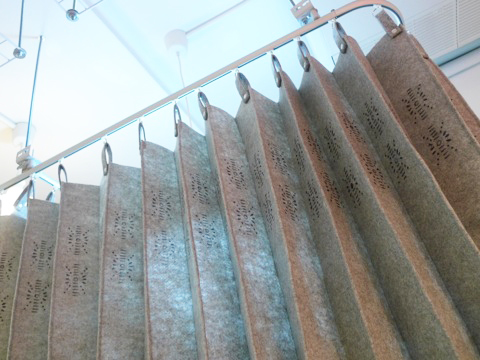
Left: The slightest fiber of wool felt is the most primitive material for making clothes.
Right: Does the screen to create fitting room space look like a metal gate of an old shop?
From Debbie’s perspective, wool felt is a lovely material of which every part can be fully utilized. “It is the only full-bodied garment material in the world. No cutting is involved, so no material will be wasted. If it doesn’t work, just weave it again!”
She will even use madder, cape jasmine and other herbs to dye the fiber for a natural touch of colour. “I'm definitely not a fashion person. I just want to design something timeless, stylish and durable,” she said. “Do you know how long it takes wool to degrade? It cannot be fully burnt even if you burn it.”
Setting up a brand and a shop is, to a large extent, to promote the classic craftsmanship which is barely known. She calls this “slow fiber movement”, which means spending more time doing something traditional and natural instead of leaving something extra and unnecessary behind.
Know more about: Debbie Leung

